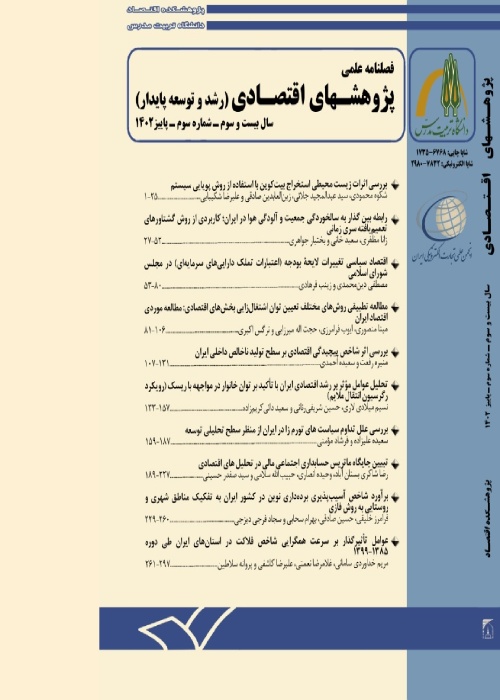Investigating the Effect of Banking Sector Development Indicators on the Stability of Iranian Banks with Emphasis on Efficiency Factor
During crises, the best way to reduce economic vulnerability is to increase the stability of banks. According to Basel Committee's emphasis, the survival rate of any economy is proportional to the stability rate of its banks, and the stability of banks is also proportional to their efficiency rate. But in the current economic conditions of the country, where extensive political and economic risks are threatening the state of financial and monetary systems, examining the situation and predicting future risks, and preparing in advance to face high-risk conditions is the best way to deal with the effects of these threats. Therefore, as the most important step in examining the conditions of monetary institutions, it is very important to identify the factors affecting the development of the monetary sector that can affect the stability of banks. By knowing these indicators, banks can quickly adapt to new conditions, in such a way that they understand and absorb internal and external risks efficiently in the shortest possible time.
By examining the issue of stability of banks among the researchers registered in two scientific databases, “Web of Science and Scopus”, and transferring the keywords of 173 articles found in these two databases from 1991 to 2020 to Vosviewer software, the relationship between the keywords of these researches was checked with stability. According to the possibility or impossibility of collecting the statistics of these cases at the level of the country's banks, finally, 17 possible indicators affecting the stability of Iranian banks were identified. Then, their data were collected at the level of 30 Iranian public and private banks and credit institutions during 2002-2020. On the other hand, all the amounts involved in the indices were converted to the price of the base year of 2002 with the help of the inflation index calculator, available on the Central Bank website. Then, with the help of the econometric method of dynamic panel data, the relationship between these indicators and the stability values of the country's banks was examined and Sargan's post-estimation tests and AR(1) and AR(2) statistics were used to measure the validity and accuracy of the model. To estimate the model, firstly, by performing the unit root test of Im, Pesaran, and Shin, (specific to panel models in Stata software), the mean of each variable was evaluated. Since the degree of integration of all variables was not the same, with the help of the KAO cointegration test for panel data, the possibility of the existence of a relationship between independent and dependent variables was investigated. Then, with the help of the augmented Dickey-Fuller statistic, it was observed that hypothesis H0 was rejected and the association between the proposed independent variables and the dependent variable was stable. To determine stability-related variables, step-by-step invalid variables with a significance level greater than 0.05 were removed from the desired model and the new model was re-run until the final variables were determined.
The results showed that the first hypothesis was rejected, and efficiency was still an important factor in the stability of Iranian banks. Secondly, regarding the second hypothesis, the nature of banks, (whether they are public or private), was not considered an effective factor in their stability. Regarding the third hypothesis, 9 variables were involved with the stability of Iranian banks according to their coefficients. These variables include the ratio of Non-Performing Loan (NPL), the ratio of equity to assets, the ratio of fixed assets to total assets, previous period stability, the ratio of cash to total assets, total assets balance, the ratio of capital to liabilities, loan growth rate and the level of efficiency. Finally, the top efficient and stable Iranian banks were introduced in 2020 and the research findings were explained in the light of theoretical foundations.
According to the effect of assets and their components on the stability of banks, it is suggested that each bank’s optimal amount of assets be defined. Also, the lending rate should be changed by the growth of inflation to maintain the reasonable profit margin of the banks. Due to the importance of investigating the simultaneous effect of profitability and efficiency on the stability of banks in crisis conditions, it is necessary to investigate these cases in future research.
- حق عضویت دریافتی صرف حمایت از نشریات عضو و نگهداری، تکمیل و توسعه مگیران میشود.
- پرداخت حق اشتراک و دانلود مقالات اجازه بازنشر آن در سایر رسانههای چاپی و دیجیتال را به کاربر نمیدهد.



